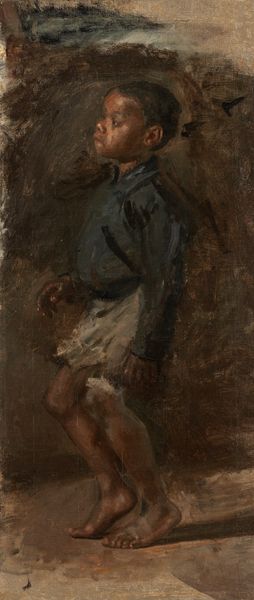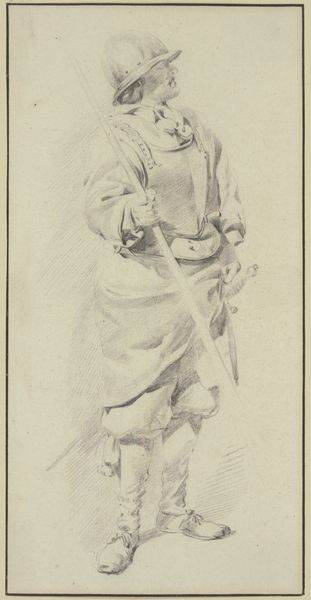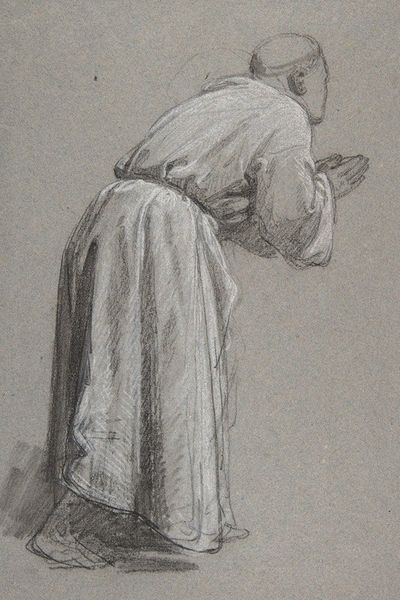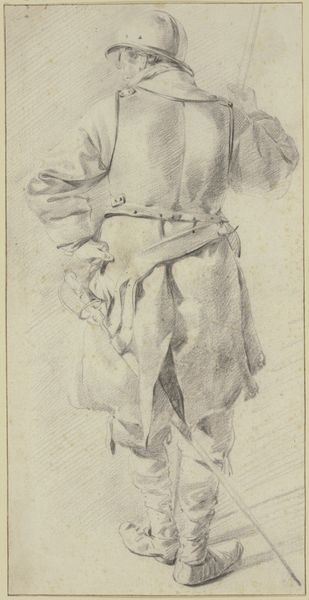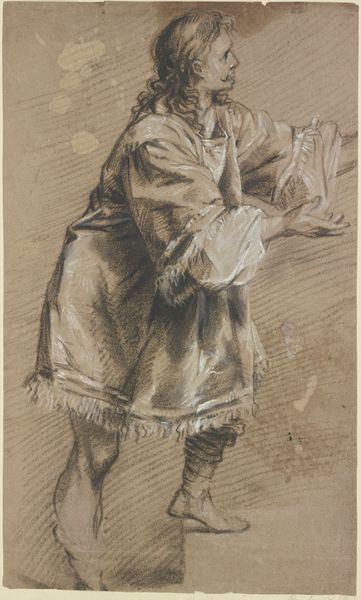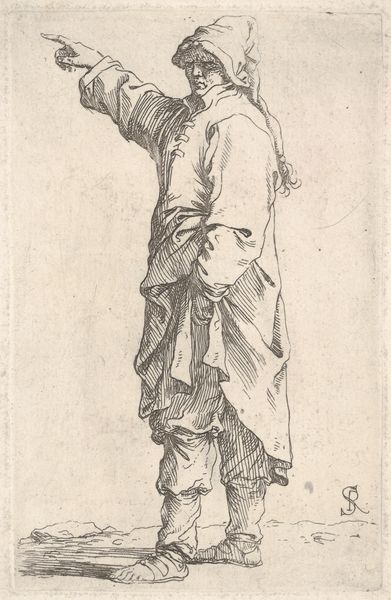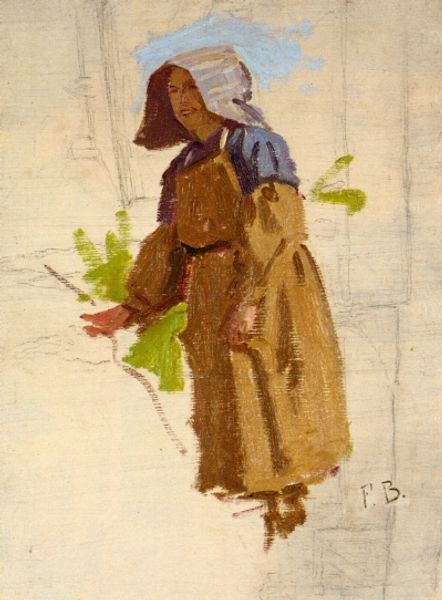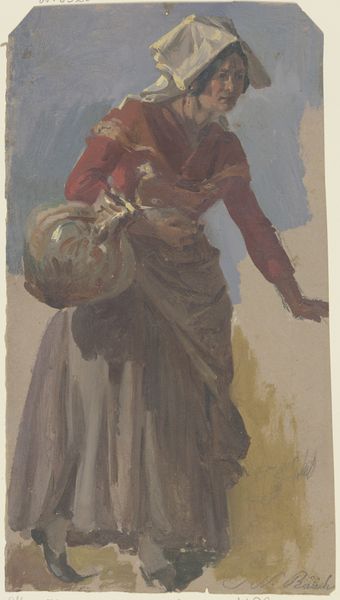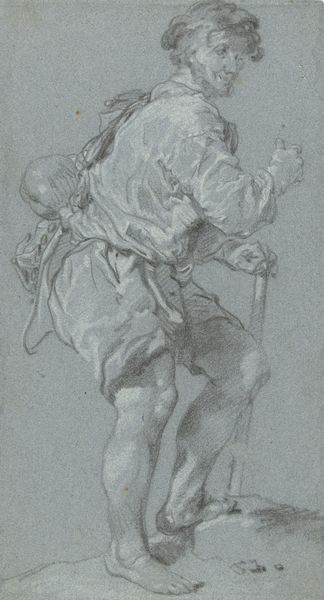
painting, oil-paint, impasto
#
portrait
#
painting
#
oil-paint
#
oil painting
#
impasto
#
male-portraits
#
orientalism
#
genre-painting
Dimensions: 49.6 x 32.1 cm
Copyright: Public domain
Editor: Here we have Edwin Lord Weeks' "Study of a Moor in Blue," painted in 1878. It’s oil on canvas, and there's a casualness to the brushstrokes that I find so appealing, a snapshot almost. What strikes you when you look at it? Curator: I'm immediately drawn to the impasto, the thick application of oil paint. It reveals Weeks's process. Look at the texture he builds. What does that say about his approach to representing the subject and this so-called "Moor"? It wasn’t just about mimicking visual reality. He wanted to capture something of the materiality and lived reality of the sitter. Editor: You mean like, instead of aiming for photorealism, he highlights the act of *making* the painting? Curator: Precisely! Think about Orientalism as a genre. It often romanticized and exoticized the "other," creating marketable fantasies for Western audiences. By foregrounding his technique, his labor, Weeks is implicitly acknowledging his role in this process. It reminds us that we're looking at a *representation* filtered through his gaze and his materials. It is easy to consume the “oriental” subject, but are we also critically consuming the means of its production? Editor: That's interesting! It does make me consider the power dynamic in portraying someone this way. It's not a neutral act. Curator: Exactly. And notice the figure's turned back. He isn't actively engaging the viewer; it's more of an observed moment. So, consider the implications: is it about the individual subject, or something else? A readily consumable idea of another culture perhaps? Editor: This reframing has given me a lot to think about, it has turned the act of representing the Moor in Blue into a tangible question, considering it is less of a captured scene and more the constructed labor behind it. Curator: Absolutely. By focusing on the means of production – the brushstrokes, the materiality, and even Weeks’s own position – we see beyond the surface representation and towards a deeper understanding of the art's role within a specific historical and social framework.
Comments
No comments
Be the first to comment and join the conversation on the ultimate creative platform.
